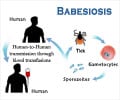A small study suggests that increased social media use among young adults during COVID-19 infections may be linked to an increase in the severity of tics.

‘Tics are sudden, uncontrollable movements and sounds often triggered by an unavoidable urge to create them. They are the defining feature of chronic disorders.’





“Given the known increases in social media use during the pandemic, as well as the parallel increase in tic disorders that we have seen in our clinic, we investigated whether there was any correlation between social media use and tic symptoms,” said study author Jessica Frey, MD, at the University of Florida in Gainesville, FL, and a member of the American Academy of Neurology. The study involved 20 teenagers and young adults aged 11 to 21 who experience tics. Participants completed a survey that examined the amount of time they spent on social media, how often they experienced tics, the intensity of those tics, and the overall quality of life, which refers to the view of an individual's physical and mental health.
In the study group, 65% of participants reported using social media an average of six hours a day, while 90% of participants reported using social media during COVID-19 pandemics more than ever before.
In addition, 85% reported that their tic frequencies worsened during COVID-19 pandemic, and 50% reported that social media negatively affected their tics.
Researchers have found a significant link between increased social media use during COVID-19 pandemic and increased severity of tics and decreased quality of life. For example, the researchers asked participants to scale from zero to six and the most severe to zero, using a scale ranging from zero to six. On average, those who reported no increase in social media usage ranked their tic frequency fourfold during COVID-19.
Advertisement
However, researchers did not find a link between social media use and how often a person had tics during the survey or since the onset of the COVID-19 pandemic. “Our results have begun to shed light on the impact that the COVID-19 pandemic and increased social media use may be having on teens and young adults with tic disorders,” said Frey. “More research is needed to better identify the exact stressors that are leading to more severe tics so we can work to reduce stressors for those who are experiencing them.”
A limitation of this study was that patients reported their own symptoms. Furthermore, changes in the nature and complexity of the tics were not evaluated.
Source-Medindia










